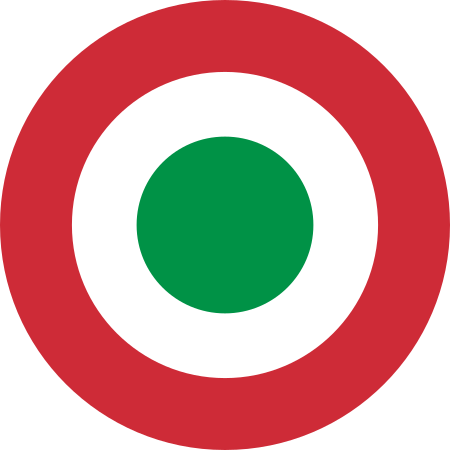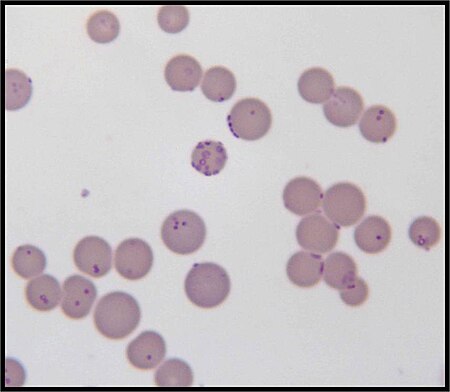French pronouns
| ||||||||||||||||||||||||||||||||||||||||||||||||||||||||||||||||||||||||||||||||
Read other articles:

Pour les articles homonymes, voir Fanfani. Amintore Fanfani Amintore Fanfani en 1983. Fonctions Sénateur à vie italien 10 mars 1972 – 20 novembre 1999(27 ans, 8 mois et 10 jours) Législature Ve, VIe, VIIe, VIIIe, IXe, Xe, XIe, XIIe et XIIIe Groupe politique DC (jusqu'en 1994)PPI (à partir de 1994) Président du Conseil des ministres italien 18 avril – 29 juillet 1987(3 mois et 12 jours) Président Francesco Cossiga Gouvernement Fanfani VI Législature IXe Coaliti…

Voce principale: Genoa Cricket and Football Club. Genoa 1893Stagione 1967-1968Sport calcio Squadra Genoa Allenatore Livio Fongaro (sino all'11 dicembre 1967) Aldo Campatelli (dall'11 dicembre 1967) Presidente Renzo Fossati[1] Serie B17º posto Coppa ItaliaPrimo turno Maggiori presenzeCampionato: Derlin e Caocci (39) Miglior marcatoreCampionato: Enzo Ferrari (13) StadioStadio Luigi Ferraris Abbonati1 798 1966-1967 1968-1969 Si invita a seguire il modello di voce Questa voce racc…

Part of the Georgian–Seljuk wars in 1121 This article possibly contains original research. Please improve it by verifying the claims made and adding inline citations. Statements consisting only of original research should be removed. (October 2023) (Learn how and when to remove this message) This article needs additional citations for verification. Please help improve this article by adding citations to reliable sources. Unsourced material may be challenged and removed.Find sources: Battl…

Come leggere il tassoboxMycoplasma Mycoplasma haemofelis Classificazione scientifica Dominio Prokaryota Regno Bacteria Phylum Tenericutes Classe Mollicutes Ordine Mycoplasmatales Famiglia Mycoplasmataceae Genere Mycoplasma Specie Micoplasmi respiratoriMycoplasma pneumoniaeMycoplasma salivariumMycoplasma oraleMycoplasma buccaleMycoplasma fauciumMycoplasma lipophilumMicoplasmi genitaliMycoplasma hominisMycoplasma genitaliumMycoplasma fermentansMycoplasma spermatophilumMycoplasma primatumAltri mico…

Election in North Dakota Main article: 2012 United States presidential election 2012 United States presidential election in North Dakota ← 2008 November 6, 2012 2016 → Nominee Mitt Romney Barack Obama Party Republican Democratic–NPL Home state Massachusetts Illinois Running mate Paul Ryan Joe Biden Electoral vote 3 0 Popular vote 188,163 124,827 Percentage 58.32% 38.69% County Results Romney 40-50% 50-60% 60-7…

This article relies largely or entirely on a single source. Relevant discussion may be found on the talk page. Please help improve this article by introducing citations to additional sources.Find sources: Conservatoire de musique du Québec à Trois-Rivières – news · newspapers · books · scholar · JSTOR (March 2010) Conservatoire de musique du Québec à Trois-RivièresConservatoire de Musique de Trois-Rivières, Quebec, CanadaAbbreviationCMQTFormation19…

提示:此条目页的主题不是中華人民共和國最高領導人。 中华人民共和国 中华人民共和国政府与政治系列条目 执政党 中国共产党 党章、党旗党徽 主要负责人、领导核心 领导集体、民主集中制 意识形态、组织 以习近平同志为核心的党中央 两个维护、两个确立 全国代表大会 (二十大) 中央委员会 (二十届) 总书记:习近平 中央政治局 常务委员会 中央书记处 中�…

UK school that specialises in certain subject areas This article is about specialist schools in the United Kingdom. For specialist schools in other countries, see specialist school. For special needs schools, see special school. A sign for Loreto Grammar School in Altrincham with its specialist status in maths and science advertised. Specialist schools[a] in the United Kingdom (sometimes branded as specialist colleges in England and Northern Ireland) are schools with an emphasis or focus…

City in California, United States Not to be confused with Portola Valley, California. City in California, United StatesCity of PortolaCityUnion Pacific trains in PortolaLocation in Plumas County and the state of CaliforniaCity of PortolaLocation in the United StatesCoordinates: 39°48′37″N 120°28′11″W / 39.81028°N 120.46972°W / 39.81028; -120.46972Country United StatesState CaliforniaCountyPlumasIncorporatedMay 16, 1946[1]Area[2] …

GlorfindelTokoh TolkienInformasiAliasLord of the House of the Golden Flower of GondolinRasElvesBukuThe Fellowship of the Ring (1954)The Silmarillion (1977)Children of Húrin (2007)The Fall of Gondolin (2018) Glorfindel (ɡlɔrˈfindɛl) adalah tokoh fiksi dalam legendarium Middle-earth milik J. R. R. Tolkien. Ia adalah bagian dari kaum Noldor, salah satu dari tiga kelompok Calaquendi atau High Elves. Namanya berarti berambut emas dalam bahasa Sindarin. Laurefindelë adalah namanya dalam bahasa Q…

Sunni Muslim polymath (c. 1058–1111) Not to be confused with al-Ghazal. For other uses, see Ghazali. ImamAl-GhazaliٱلْغَزَّالِيّName of al-GhazaliTitleHujjat al-Islam ('Proof of Islam')[1]PersonalBornc. 1058Tus, Iran, Seljuq EmpireDied19 December 1111(1111-12-19) (aged 52–53)Tus, Iran, Seljuq EmpireReligionIslamEraIslamic Golden AgeRegionSeljuq Empire(Nishapur)[2]: 292 Abbasid Caliphate (Baghdad) Fatimid Caliphate (Jerusalem) / (Damascu…

American basketball player (born 1992) Joe YoungYoung with the Indiana Pacers in 2018No. 3 – Fujian SturgeonsPositionPoint guard / shooting guardLeagueCBAPersonal informationBorn (1992-06-27) June 27, 1992 (age 31)Houston, Texas, U.S.Listed height6 ft 2 in (1.88 m)Listed weight185 lb (84 kg)Career informationHigh schoolYates (Houston, Texas)College Houston (2011–2013) Oregon (2013–2015) NBA draft2015: 2nd round, 43rd overall pickSelected by the Indiana…

Period of history of the island of Great Britain Early modern Britain is the history of the island of Great Britain roughly corresponding to the 16th, 17th and 18th centuries. Major historical events in early modern British history include numerous wars, especially with France, along with the English Renaissance, the English Reformation and Scottish Reformation, the English Civil War, the Restoration of Charles II, the Glorious Revolution, the Treaty of Union, the Scottish Enlightenment and the …

Alternative calendar used by some adherents of Discordianism YOLD redirects here. For the ICAO code, see Olympic Dam Airport. Discordian to Gregorian conversion calendar The Discordian or Erisian calendar is an alternative calendar used by some adherents of Discordianism. It is specified on page 00034 of the Principia Discordia.[1]: 00034 The Discordian year 1 YOLD is 1166 BC. (Elsewhere in the Principia Discordia, it is mentioned that the Curse of Greyface occurred in 1…

وسام نجمة الشرف الفلسطينية شعار دولة فلسطين مؤسس دولة فلسطين البلد دولة فلسطين يُمنح من طرف رئيس دولة فلسطين نوع الوسام وسام دولة العاهِل محمود عباس منحت لـ الملوك والرؤساء وكبار السياسيين إحصاءات تاريخ الإنشاء 2007 أول وسام 2007 صورة شريط الوسام تعديل مصدري - تعديل وسام نج�…

DenUdimu, Dewen“Label MacGregor” dari makam Den di Abydos, EA 55586FiraunMasa pemerintahan42 tahun, dimulai skt. 2970 SM (Dinasti pertama Mesir)KoregensiMerneithPendahuluDjet, MerneithPenggantiAnedjibGelar kerajaan Prenomen (Praenomen) Nisut-Bity-Khastynsw.t-bjtj-ḫ3st.jRaja Mesir Hulu dan Hilir, ia adalah dua gurun Nama Horus Hor-DenḤr-dnIa yang membawa air Horus emas Iaret-nebu-shenjˁr.t-nbw-šnKobra emas Daftar Raja AbydosSepatisp3t.jIa adalah dua distrik Daftar Raja TurinQenent…

Road in trans-European E-road network E962Route informationLength51 km (32 mi)Major junctionsFromEleusisToThebes LocationCountriesGreece Highway system International E-road network A Class B Class European route E 962 is a European B class road in Greece, connecting the city Eleusis – Thebes. Route Greece Eleusis Thebes External links UN Economic Commission for Europe: Overall Map of E-road Network (2007) International E-road network vteInternational E-road network E1 E3 E…

Chinese water and weather deity For Indian deities, see Nagaraja. For Japanese deity, see Ryūjin. For other uses, see Dragon King (disambiguation). Longwang redirects here. For the storm, see Typhoon Longwang. Dragon KingDragon King of the Seas (海龍王), painted in the first half of the 19th century.Traditional Chinese龍王Simplified Chinese龙王Literal meaningDragon KingDragon PrinceTranscriptionsStandard MandarinHanyu PinyinLóngwángAlternative Chinese nameTraditional Chi…

Voce principale: Antico Egitto. La geografia dell'antico Egitto non è molto dissimile da quella dell'Egitto odierno. Indice 1 Nomo 2 Basso Egitto 2.1 Nomi 3 Alto Egitto 3.1 Nomi 4 Medio Egitto 5 Due Terre 6 Note 7 Voci correlate 8 Altri progetti Nomo Con il termine nomo (al plurale nòmi), gli storici greci, primo fra tutti Erodoto, identificarono i distretti in cui era suddiviso l'antico Egitto; il termine egizio originario era sepat. L'Alto Egitto era suddiviso in 22 distretti, mentre il Bass…

Racing automobile This article needs additional citations for verification. Please help improve this article by adding citations to reliable sources. Unsourced material may be challenged and removed.Find sources: Sauber C19 – news · newspapers · books · scholar · JSTOR (January 2021) (Learn how and when to remove this message) Racing car model Sauber C19CategoryFormula OneConstructorSauberDesigner(s)Leo Ress [ja] (Technical Director)Sergio Ri…
